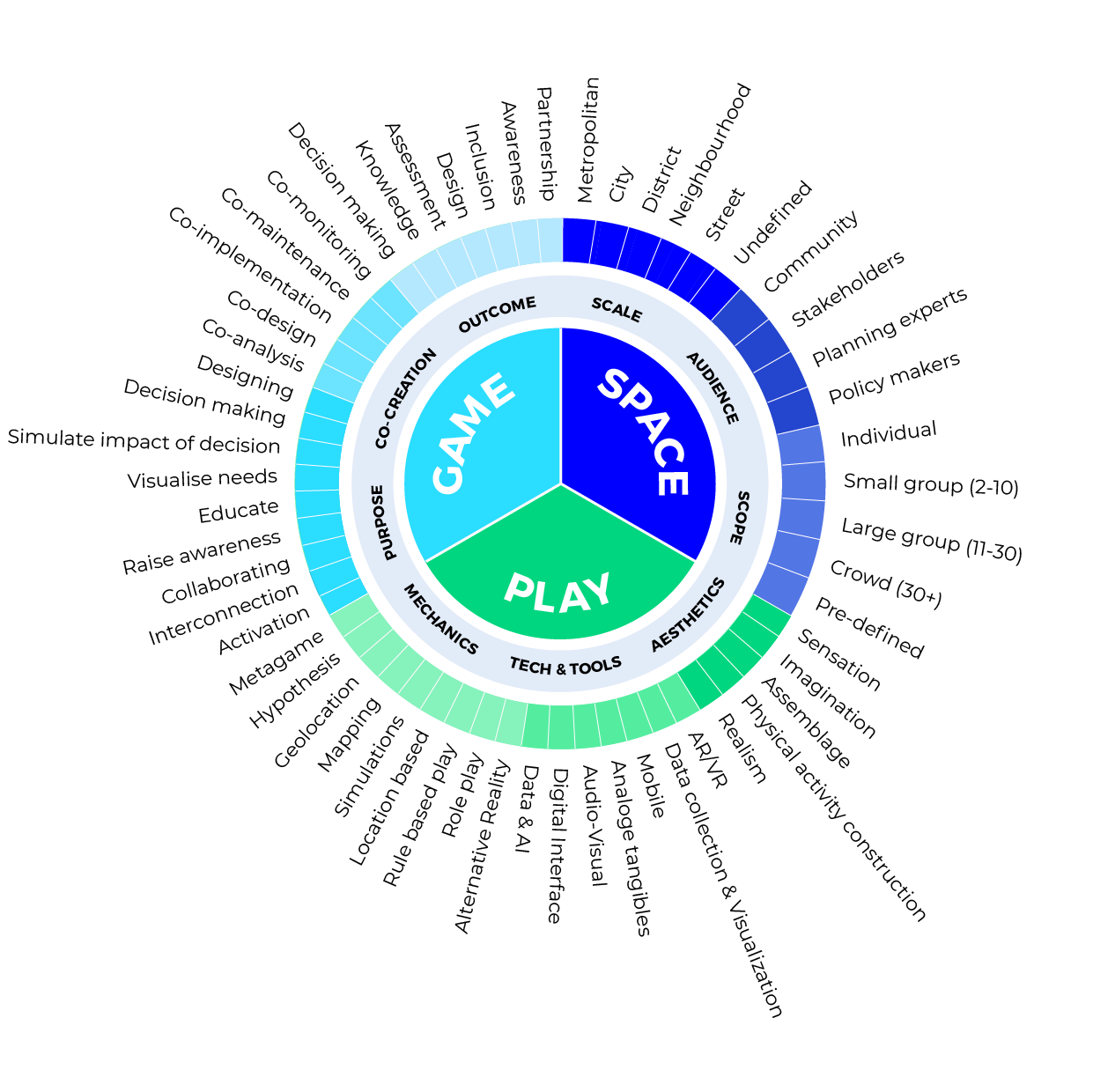| Line 3: | Line 3: | ||
|- class="header" | |- class="header" | ||
! colspan="2" | | ! colspan="2" | | ||
|- | |- | ||
| class="content separator" |[[File:PPS Logo 4x.png|center|frameless]] | | class="content separator" |[[File:PPS Logo 4x.png|center|frameless]] | ||
Welcome to the ''Public Play Space'' Community Platform! | |||
Public Play Space (PPS) is a project co-funded by the Creative Europe Programme of the European Union and developed by IAAC, BUas, and CLAC. It promotes innovative and creative practices for the co-design of inclusive, cohesive, and sustainable public spaces, through the use of games and digital technologies, in a transnational and European perspective, fostering the process of placemaking. | |||
The objective of the ''Public Play Space'' Wiki Platform is to create a knowledge community on the use of digital technologies and games to enhance participatory processes for urban design and placemaking, allowing a wider dissemination of the ''best practices'' in this field and to facilitate knowledge sharing and the interaction among key stakeholders. | |||
The first 30 projects uploaded in this PPS Community Platform are the result of an Open Call of Public Play Space Initiatives launched in December 2019 and from a competitive desk review selection. | |||
After opening the discussion with these interesting cases, we invite you all to send us your project and initiative and to join our Public Play Space Community! | |||
<br /> | <br /> | ||
|[[File:Categories Graphic.png]] | |'''''METHODOLOGICAL NOTES''''' | ||
The projects are analysed and described using an innovative framework, articulated into 3 concentric levels of analysis and categorisation. This analytical approach allows a deeper understanding of projects that shows a high level of complexity and sophistication, enabling the reader to extract learnings on the different impacts and strategies. | |||
At the same time, this categorization will enable the reader to navigate the project according to different features, actions, and properties that characterize them. | |||
The first level of analysis describes each project based on the three categories of ''Space, Game, and Play''. | |||
* ''Space'' Represents the spatial scale in which the project is executed and its audience. | |||
* ''Game'' Represents the project’s main purpose. | |||
* ''Play'' Represents the instruments used in the best practices. | |||
Three sub-categories are identified for each one of them, and they are finally further described in a third level of analysis. | |||
[[File:Categories Graphic.png]] | |||
|} | |} | ||
Revision as of 10:48, 10 November 2020
| PURPOSE ACTIVATION | STREETS & PAVEMENTS | PARKS AND LANDSCAPE | OTHER |
|---|---|---|---|
|
AR:ticipate
|
No pages meet these criteria. |
No pages meet these criteria. |
No pages meet these criteria. |
| RESEARCH | TEMPORARY | PERMANENT | TEMPLATE |
|
No pages meet these criteria. |
No pages meet these criteria. |
No pages meet these criteria. |
No pages meet these criteria. |

